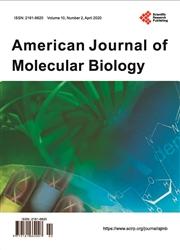Streptococcal Pyrogenic Exotoxin Genes SpeA and SpeB in Isolates of Streptococcus pyogenes from Children with Pharyngitis, Gezira State, Sudan
引用次数: 0
Abstract
Background: Streptococcus pyogenes (group A streptococcus, GAS) is an important human bacterial pathogen. This organism possesses many virulence factors, Streptococcal pyrogenic exotoxinone of these. Aim: Detection of Streptococcal pyrogenic exotoxin SpeA and SpeB in isolated Streptococcus pyogenes. Methods: Tow hundred throat swab samples were collected from children with pharyngitis referred to Pediatric Teaching hospital and ENT hospital Wad medani, Sudan, from January to November 2021. The ques-tionnaire was filled out to collect clinical and demographic data. Throat swabs were collected and processed with the standard microbiological pro-cedure to isolate Streptococcus pyogenes. Antimicrobial susceptibility testing was done on all GAS isolates using the Kirby Bauer disk diffusion method according to clinical laboratory standard institute (CLSI) guidelines. Detection of Spy 1258 gene and Streptococcal pyrogenic exotoxins SpeA and SpeB were done by using Multiplex PCR. Results: Amongst the Tow hundred collected samples fifty-one isolates (25.5%) were identified as S. pyogenes. Antibiotic susceptibility testing showed that all the GAS isolates were sensitive to Azithromycin and Penicillin. Sensitivity to Erythromycin, Gentamicin, Clarithromycin, Amoxicillin and Cephalexin were 88.2%, 86.3%, 45.1%, 41.2%, 13.7%, respectively. SpeA was detected in 17 (33.3%) and SpeB in 48 (94.1%). Conclusion: Streptococcal pyrogenic exotoxin genes SpeA and SpeB were detected in 17 (33.3%) and 48 (94.1%) respectively of Streptococcus pyogenes isolates.苏丹Gezira州儿童咽炎化脓性链球菌分离株的热原性外毒素基因SpeA和SpeB
背景:化脓性链球菌(A族链球菌,GAS)是一种重要的人类致病菌。这种生物具有许多毒力因子,链球菌热原外毒素是其中之一。目的:分离株化脓性链球菌中热原外毒素SpeA和SpeB的检测。方法:收集2021年1 - 11月在苏丹Wad medani儿科教学医院和耳鼻喉科医院转诊的咽炎患儿200例咽拭子样本。填写问卷是为了收集临床和人口统计数据。收集咽拭子并按照标准微生物程序进行处理以分离化脓性链球菌。根据临床实验室标准协会(CLSI)指南,采用Kirby Bauer纸片扩散法对所有GAS分离株进行药敏试验。采用多重PCR法检测spy1258基因和链球菌热原外毒素SpeA和SpeB。结果:在采集的200份样品中,鉴定出51株化脓性葡萄球菌,占25.5%。药敏试验表明,所有菌株对阿奇霉素和青霉素均敏感。对红霉素、庆大霉素、克拉霉素、阿莫西林、头孢氨苄的敏感性分别为88.2%、86.3%、45.1%、41.2%、13.7%。检出SpeA 17例(33.3%),SpeB 48例(94.1%)。结论:产化脓性链球菌分离株中检出热原外毒素基因SpeA和SpeB分别为17株(33.3%)和48株(94.1%)。
本文章由计算机程序翻译,如有差异,请以英文原文为准。
求助全文
约1分钟内获得全文
求助全文

 求助内容:
求助内容: 应助结果提醒方式:
应助结果提醒方式:


